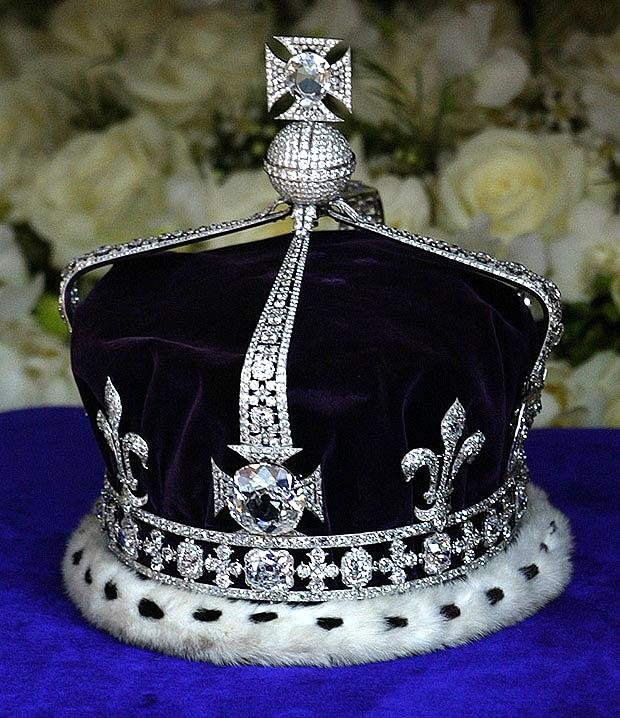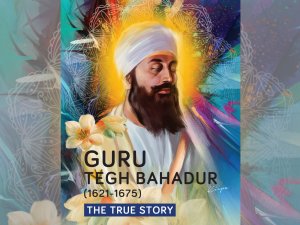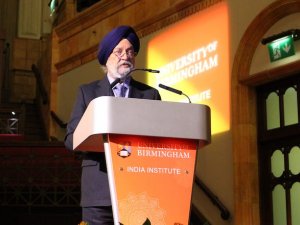Or, should these be safeguarded and preserved in the UK for the benefit of the world Sikh community ?
That is the debate which has been going on for many years.
Most recently, Keith Vaz, a senior Labour MP, has called for the return of the Koh-i-Noor diamond in the crown of the Queen Mother, to India. To quote, “There is no excuse for not returning precious items such as the Koh-i-Noor diamond, a campaign I have backed for many years. What a wonderful moment it would be, if and when Prime Minister Modi finishes his visit, which is much overdue, he returns to India with the promise of the diamond's return." (The Economic Times 28 July 2015, “Return 'Koh-i-Noor' diamond to India, says UK MP Keith Vaz )
He was responding to Congress MP Shashi Tharoor's speech at the Oxford Union “ calling for Britain to pay reparations to India for 200 years of its brutal colonial rule.” There are too many flaws in that “stirring speech” into which we need not go here. Otherwise, we would be quoting from many “stirring speeches” from those who have witnessed events and even experienced 1984 and following years in Punjab and Delhi.
Such talk is not very amusing for the global Sikh community, who have always associated the diamond with Maharaja Ranjit Singh, and, especially the last Sikh Maharjah Duleep Singh, who was duped into handing it over to Queen Victoria when he was brought to the UK in 1854. Also, it is interesting that Keith Vaz did not mention the Sikhs or Maharajah Duleep Singh at all
 Following the annexation of Punjab in 1849, the Treaty of Lahore
(1849), “legalising”, what some still regard as illegal occupation of the Sikh
kingdom, stated: “The gem called the Koh-i-Noor (belonging to
Maharajah Ranjit Singh) shall be surrendered by the Maharajah of Lahore to the
Queen of England.” And so, some years later when Maharaja Ranjit Singh's
successor, the young Maharaja Duleep Singh was taken to England, he was
“persuaded” to present the diamond to Queen Victoria.
Following the annexation of Punjab in 1849, the Treaty of Lahore
(1849), “legalising”, what some still regard as illegal occupation of the Sikh
kingdom, stated: “The gem called the Koh-i-Noor (belonging to
Maharajah Ranjit Singh) shall be surrendered by the Maharajah of Lahore to the
Queen of England.” And so, some years later when Maharaja Ranjit Singh's
successor, the young Maharaja Duleep Singh was taken to England, he was
“persuaded” to present the diamond to Queen Victoria.
To quote a passage from an article of 21 September, 2013, “THE MAHARAJAH, DULEEP SINGH ~ QUEEN VICTORIA'S 'BEAUTIFUL BOY”:
“As if this was not insult enough, the young prince felt obliged to show his loyalty to the Queen, or else be suspected of treachery. And so, he offered the diamond back, placing it in Victoria's hands, saying, 'It is to me, Ma'am, the greatest pleasure thus to have the opportunity, as a loyal subject of myself tendering to my sovereign, the Koh-i-nor.”
There have been previous similar requests from leading Indians. Some of these periodical demands to do with compensation for colonial pillaging are understandable. However, at ground reality level, such reparations, if at all, would be limited to return of artifacts of special religious or cultural significance to certain communities. These can be distinguished from a blanket demand by post-partition Indian state for “Britain to pay reparations to India for 200 years of its brutal colonial rule.” Such a demand lacks credibility.
There is an even more compelling claim on the Koh-i-Noor diamond from the Sikh community. It is surprising that this time an ex-British Minister has repeated the same request and not even mentioned the Sikhs in the context of Anglo-Sikh treaties.
In fact, mention of Maharajah Duleep Singh is studiously omitted by some mainstream media reports.
I think the issue is important, because it also touches on other 1984 related Sikh concerns about destruction of irreplaceable Sikh heritage including the Reference Library at Darbar Sahib. Thousands of priceless Sikh heritage documents and artifacts have been destroyed or are missing. In any case, neglect of Sikh heritage in Panjab and India is worrying.
These were the related issues which I had in mind in 2001, when I briefed John McDonnell MP for Hayes and Harlington in the presence of some leading Sikhs in the area. His speech during the Adjournment Debate, about the "Punjabi Community" covered most of the points in Hansard of Monday 16 July 2001 Vol 372 No.21 pp 130 & 131.
On 18 July, John McDonnell, sent me a copy of the Hansard (official Parliamentary report) with a covering note saying, “You will note that I raised the issue of Sikh artifacts as you suggested”.
The relevant part of John's speech is quoted below:
"This year [2001] we will witness the celebration of the bicentenary of Maharajah Ranjit Singh, and this month the V&A has organised a seminar on "Preserving the Sikh Heritage". The Sikh material heritage ranges from simple pieces produced in homage to Sikh gurus to precious art works and gems in museums and royal collections. The Koh-i-noor diamond, which is part of the Crown jewels, is a Sikh artifact given to Queen Victoria - some say under duress - by the last Maharajah Duleep Singh - we need to examine how co-operation between Governments and [the Sikh] community organisations can best assist in preserving and holding in trust these priceless objects for the worldwide Sikh community."
All Sikh religious and historical artefacts in the UK should be identified - including those taken by Lord Dalhousie, - catalogued, preserved and shown to the world as part of the great SIKH heritage.
Gurmukh Singh (email:[email protected])
Principal UK Civil Servant ret’d
[1] [ Note; Koh-i-Noor, set in the crown of the late Queen Mother, is on display with the Crown Jewels in the Tower of London. ]





